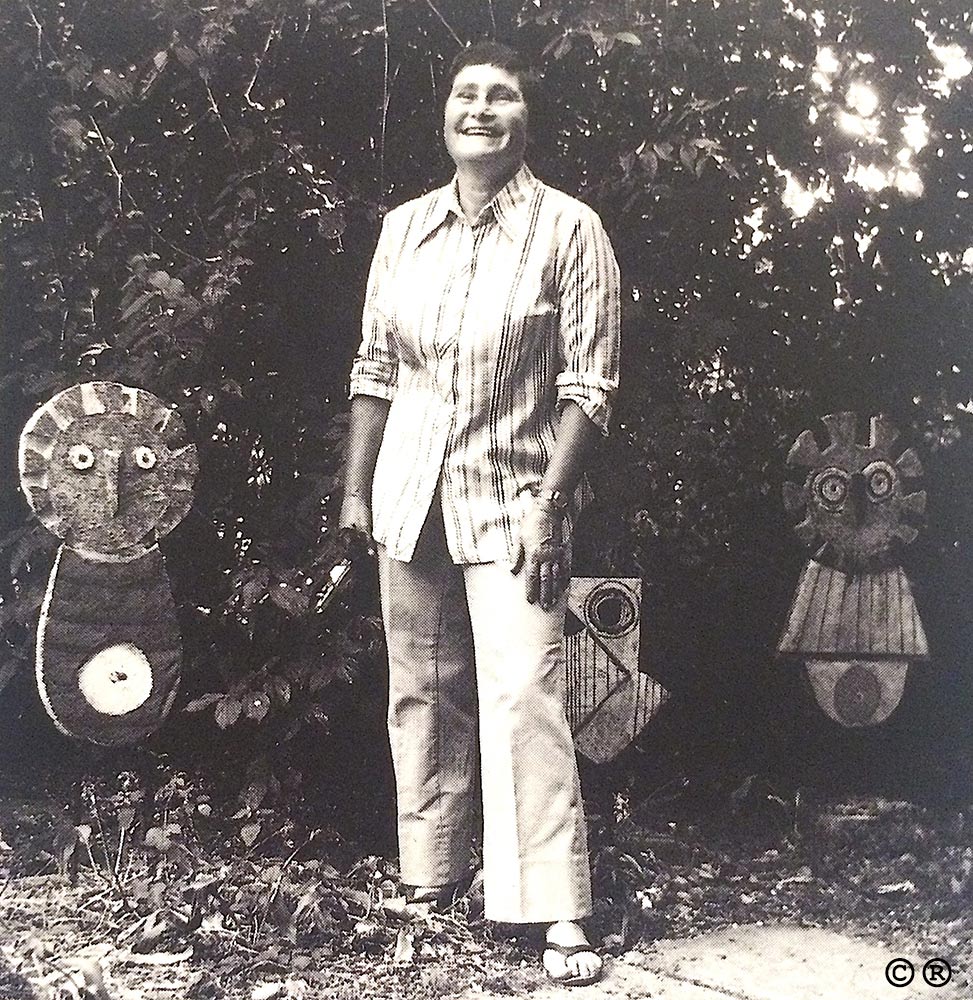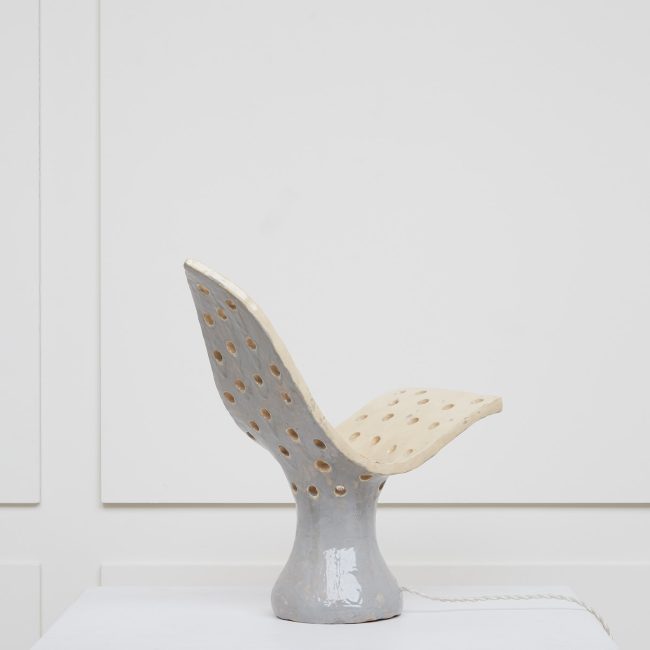Guidette Carbonell (1910-2008)
Marguerite or “Guidette“ Carbonell (1910-2008) was born in Meudon, France of a Catalan father and an Armenian mother who came to Paris to study painting. Those two origins nurtured her creative imagination, atypical and unique, throughout her career. Both Catalan and Armenian folklores inspired her oneiric work which has something of the aesthetics of fairy tales and fantasy.

View full biography
Guidette drew from the age of five and spent all her summers at her grandparents’ in Rousillon, where she observerved at a very early age the work of the craftsmen from a close brickworks. At the age of 15, while being in Paris, she attends several art classes where she enhances her drawing technique: André Lhote’s class at the Grande-Chaumière, Othon Friesz’ at the Académie Suédoise and Roger Bissière’s at the Académie Ranson. She receives training in ceramics, in particular in modelling, a bit later, in an applied arts school rue de Fleurus. Guidette then begins quite quickly to create ceramic pieces, noting her practice is at this time influenced by other artists: she shares her first studio in Vitry with Catalan ceramist Josep Llorens i Artigas, well-known for his collaboration with painters Raoul Duffy and Joan Miró. Her first designs are exhibited in 1928 at the Salon d’Automne at Paul Beyer’s, Emile Decoeur’s, Auguste Delaherche’s or Jean Mayodon’s side. Early at this stage, she stands out with colorful and impish pieces, skilfully conceived by the artist with the point of her pencil before handcrafting them.
From figurative to abstract art, incorporating unu- sual elements to clay or to cement, be it glass or metal, she expresses, with a quite modern unfinished touch, a troubled inner world, which remind one’s of the one of childhood. Nourished by Eastern culture, captivated by Romanesque and Primitive representations, Guidette deploys a fabulous bestiary whose oddness is deeply striking, where human progressively mingles with animal.
Her works are a great testimony of the breaking down of barriers between artistic practices which emerged at the end of the XIXth century and knows great development at the beginning of the XXth century: her pieces are deeply inspired by painting and sculpture. In the 1950s, Guidette even creates important ceramic and stone wall pannels and bas-reliefs. She continues to explore the possibilities of ceramics until the end of the 1960s, a time period during which she starts to dedicate herself to tapestry. Her tapestries are then made of fabric pieces that are glued and sewn together.
All her work, from the 1930s to the 1990s, which explores the worlds of mythology, music, poetry and science with constant wonder before nature, now seems an extraordinarly contemporary expression. During her lifetime, several institutional exhibitions have been dedicated to her, notably those by the French Association for Artistic Action (AFAA), which spread her works worldwide. More recently, in 2007, an important retrospective of her work has been organised by Paris Museum for Decorative Arts (MAD), La Piscine in Roubaix and Rouen Museum for Ceramics.



